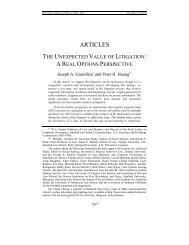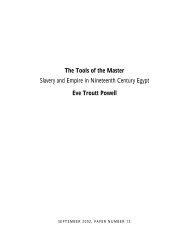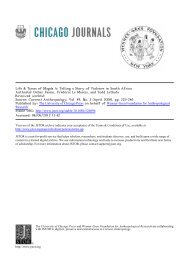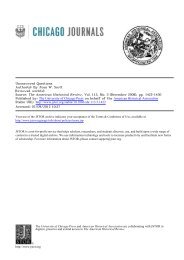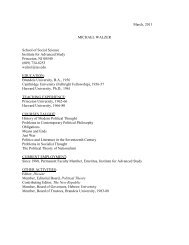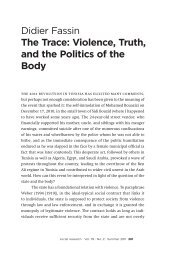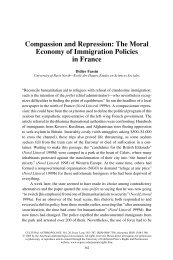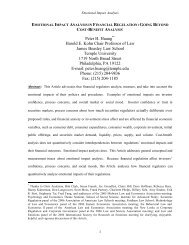Secure Implementation Experiments: Do Strategy-proof Mechanisms ...
Secure Implementation Experiments: Do Strategy-proof Mechanisms ...
Secure Implementation Experiments: Do Strategy-proof Mechanisms ...
Create successful ePaper yourself
Turn your PDF publications into a flip-book with our unique Google optimized e-Paper software.
4. <strong>Secure</strong> <strong>Implementation</strong> in Public Good Economies<br />
The previous section presented two examples drawn from many strategy-<strong>proof</strong><br />
mechanisms that may have “bad” Nash equilibria. They implement the social choice function<br />
(SCF) in dominant strategies, but not in Nash equilibria. Saijo et al. (2003) introduce a new<br />
concept of implementation, called secure implementation, which does not share this<br />
shortcoming.<br />
We introduce notation and definitions here to describe the concept of secure<br />
implementation in the context of public good economies with two agents and quasi-linear<br />
preferences. Denote the set of feasible allocations by<br />
A= {( y, t , t ) y∈Y, t , t ∈R}<br />
1 2 1 2 ,<br />
where Y ⊆Ris a production possibility set, y<br />
∈ Y is an output level of a public good, and t i is a<br />
transfer of a private good to agent i. For simplicity, we assume that there is no cost involved in<br />
producing y. Each agent i’s utility function, u i : A → R, is selfish and quasi-linear:<br />
u ( y, t1, t2 ) = u ( y, t ) = v ( y)<br />
+ t , i = 12 , .<br />
i i i i i<br />
The class of valuation functions, v i : Y → R, admissible for agent i is denoted by V i . Following<br />
Holmström (1979), suppose V i is smoothly connected. Let v = ( v1, v2 ) ∈ V ≡ V 1× V 2 be a<br />
valuation profile.<br />
A social choice function (SCF) is a function f : V → A that associates with every list of<br />
valuation functions, v ∈ V, a unique feasible allocation f (v) in A. The allocation f (v) is said to be<br />
f-optimal for v.<br />
A mechanism (or game form) is a function g: S<br />
12<br />
× S → A that assigns a unique element of<br />
1 2<br />
A to every ( s , s ) ∈ S × S , where S i is the strategy space of agent i. For a strategy profile<br />
1 2 1 2<br />
1 2 1 2<br />
s= ( s , s ) ∈ S × S , the outcome of g for the profile s is denoted by gs () = ( y (), s t ()) s , where<br />
g<br />
y () s is the level of the public good and t () s = ( t1 (), s t2 ()) s is the transfer vector.<br />
g g g<br />
The strategy profile s= ( s , s ) ∈ S × S is a Nash equilibrium of g at v ∈ V if<br />
1 2 1 2<br />
g g g g<br />
1 1 2 1 1 2 1 1 2 1 1 2<br />
v ( y ( s , s )) + t ( s , s ) ≥ v ( y ( s′ , s )) + t ( s′ , s ) for all s1′ ∈S1 , and<br />
g<br />
g




